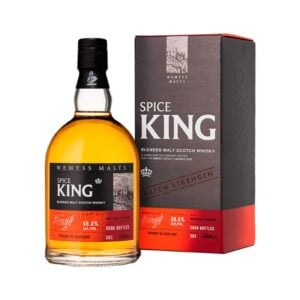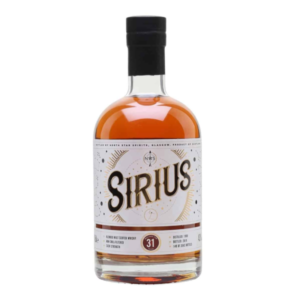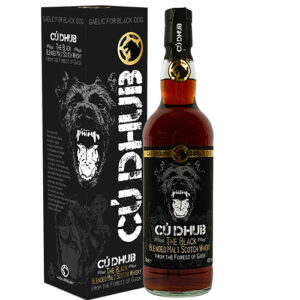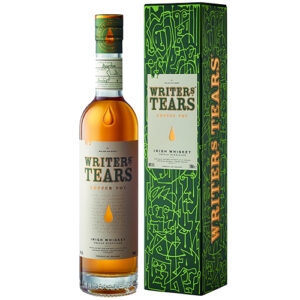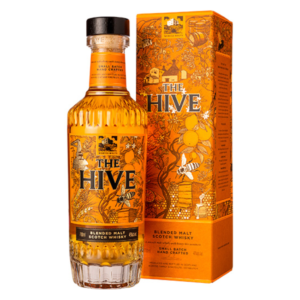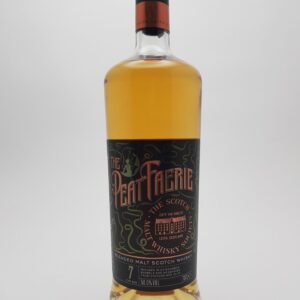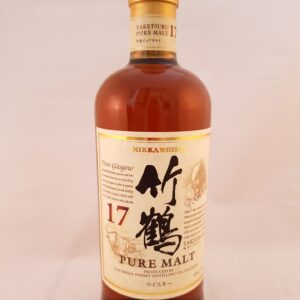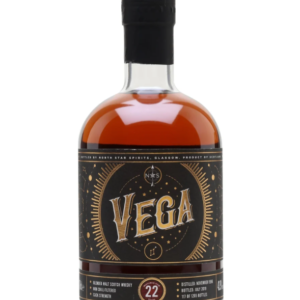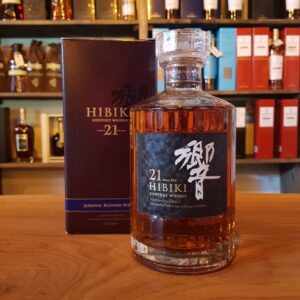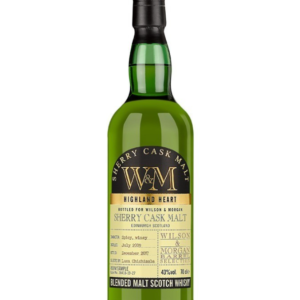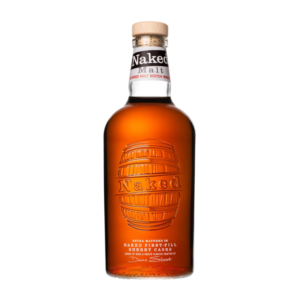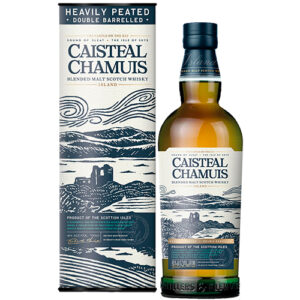Showing all 13 resultsSorted by popularity
Blended Malt Whisky – The Complete Guide
TL;DR: Briefly Explained
- Blended Malt whisky is characterized by being a mixture of single malt whiskies from different distilleries
- Made primarily from malted barley and defined by the blending process that combines multiple single malts
- Found in several styles, including light and floral, rich and fruity, and heavily peated varieties
- Best enjoyed neat or with a drop of water and can be experienced in cocktails like the Rusty Nail or Rob Roy
Disclaimer: This guide is intended for informational purposes for adults over 18 years of age. Vault of Spirits encourages responsible consumption of alcohol.
Introduction to Blended Malt Whisky
Blended Malt whisky has a rich history and fascinating craftsmanship behind it. From its origins in Scotland to its global popularity today, this spirit category has evolved to become one of the world’s most appreciated whisky styles.
This guide provides insight into the production, flavor notes, and enjoyment of Blended Malt whisky, whether you’re a beginner or experienced enthusiast.
How Did Blended Malt Whisky Originate?
From Past to Present
Blended Malt whisky, previously known as “Vatted Malt” or “Pure Malt,” emerged in Scotland during the 19th century.
Blending master craftsmen discovered that combining malts from different distilleries could create more consistent and complex whiskies than those from single sources.
This style evolved as a middle ground between single malts and blended whiskies (which contain grain whisky), offering the complexity of the former with the consistency advantage of the latter.
Which Historical Milestones Shaped Blended Malt Whisky?
The Spirits Act of 1860 legalized the blending of whisky in Scotland, paving the way for this category’s development.
In 2009, the Scotch Whisky Regulations formalized the term “Blended Malt Scotch Whisky,” replacing older terminology like “Vatted Malt” to provide clearer definitions for consumers.
Pioneering blending houses like Johnnie Walker and Compass Box have pushed the boundaries of what blended malts can achieve, elevating the category’s reputation.
How Has Blended Malt Whisky Influenced Cultural Traditions?
In Scotland, blended malt whisky became an important cultural export that helped spread Scottish whisky traditions worldwide.
The art of blending malts is celebrated as a specialized craft requiring exceptional sensory skills and deep knowledge of whisky character.
Blended malts have featured prominently in literature and film, representing both everyday enjoyment and sophisticated taste.
Why Is Blended Malt Whisky Popular Today?
Modern whisky enthusiasts appreciate blended malts for their complexity and value proposition, often offering sophisticated flavors at more accessible prices than premium single malts.
Creative blenders like John Glaser of Compass Box have reinvigorated interest in blended malts through innovative approaches and transparency about their components.
The category appeals to both newcomers seeking approachability and connoisseurs looking for complex, consistent flavor profiles.
How Is Blended Malt Whisky Made?
Which Raw Materials Are Used in Production?
Like all malt whiskies, blended malts begin with a single crucial ingredient: barley.
Primary ingredients:
- Malted Barley – The sole grain ingredient, germinated and dried to develop enzymes that convert starches to fermentable sugars
- Water – Usually drawn from local sources, water influences character through its mineral content
- Yeast – Converts sugars to alcohol during fermentation, affecting flavor development
How Does the Fermentation Process Work?
Ground malted barley is mixed with hot water in a mash tun to extract fermentable sugars, creating a liquid called wort.
This wort is cooled and transferred to fermentation vessels where yeast is added, converting sugars to alcohol over 48-96 hours.
The resulting liquid, called wash, typically reaches 8-9% ABV and develops fruity, cereal, and sometimes sulfury notes that carry through to the final spirit.
Which Distillation Techniques Are Used?
Each constituent single malt in a blend undergoes its own distillation process before blending.
Common distillation methods:
- Pot Still Distillation – Traditional copper pot stills used for all Scottish single malts, delivering rich, characterful spirit
- Double Distillation – Common in most Scottish distilleries, balancing flavor retention and purity
- Triple Distillation – Used by some distilleries like Auchentoshan, producing lighter, smoother spirit
What Is the Significance of Maturation?
Each component single malt is aged separately in oak casks, typically for a minimum of three years for Scotch whisky.
The master blender selects matured whiskies from different distilleries, combining them based on their complementary characteristics.
After blending, the whisky may undergo a “marriage period” – additional maturation time allowing flavors to integrate harmoniously.
Cask types used include ex-bourbon barrels, sherry butts, port pipes, and other wine casks, each imparting distinct flavors.
Which Regions Are Known for Blended Malt Whisky?
Where Are the Best Variants Produced?
Scotland is the spiritual home of blended malt whisky, with blending houses located across the country, particularly in Edinburgh, Glasgow, and Speyside.
Japan has developed a significant reputation for excellent blended malts, with houses like Nikka and Suntory creating internationally acclaimed expressions.
Other notable producing countries include Ireland, Canada, and emerging whisky nations like Taiwan, India, and Australia.
How Do Geography and Climate Affect the Flavor?
Blended malts often showcase regional characteristics from their component whiskies:
Highland malts typically contribute robust, sometimes heathery notes; Speyside components add fruitiness and elegance; Islay malts bring coastal, peaty character.
Climate affects maturation, with Scotland’s cool, humid environment allowing for slow, steady aging that develops complexity without excessive oak extraction.
The blender’s art lies in balancing these regional influences to create a harmonious whole.
What New Trends Are Seen in Blended Malt Whisky Production?
Transparency in sourcing is becoming more important, with some producers openly listing the distilleries and proportions in their blends.
Experimental cask finishing is increasingly common, with blended malts being further aged in unusual barrels like rum, tequila, or exotic wine casks.
Limited edition seasonal releases and small-batch variants allow blenders to showcase their creativity and respond to changing consumer preferences.
What Do the Different Quality Designations Mean?
“Blended Malt Scotch Whisky” must legally contain only single malt whiskies from multiple distilleries, with no grain whisky.
Age statements on blended malts refer to the youngest whisky in the blend – a 12-year blended malt contains no whisky younger than 12 years.
No-age-statement (NAS) blends allow blenders greater flexibility in creating specific flavor profiles without age constraints.
Terms like “Premium” or “Super Premium” are marketing designations rather than regulated categories.
How Does Blended Malt Whisky Taste?
What Characterizes the Typical Flavor Profile?
Blended malts typically offer balance and complexity, with the harshness of some individual malts smoothed out through careful blending.
Typical aromas:
- Fruit notes – Apple, pear, citrus, dried fruits, and sometimes tropical fruits
- Sweet elements – Honey, vanilla, caramel, toffee
- Spice characteristics – Cinnamon, nutmeg, ginger, black pepper
How Does the Flavor Vary Between Different Styles?
Light and floral blended malts emphasize delicate Highland and Speyside characteristics with subtle honey, heather, and orchard fruit notes.
Rich and sherried styles showcase dried fruit, chocolate, and spice notes from significant sherry cask influence.
Peated blended malts incorporate smoky Islay or Island whiskies, offering medicinal, maritime, and bonfire characteristics.
Balanced styles aim to incorporate elements from multiple regions for maximum complexity.
How Does the Flavor Develop with Age?
Younger blended malts (3-8 years) tend to be more spirity and malt-forward, with pronounced cereal notes and youthful vibrancy.
Mid-aged expressions (8-15 years) develop more complexity, with increased fruit character and integration of oak influence.
Well-aged blended malts (15+ years) often display antique qualities like polish, leather, dark chocolate, and deep dried fruit notes.
What Signs Reveal High Quality?
Complexity and balance are key indicators of quality – premium blended malts deliver multiple flavor waves rather than singular notes.
A long, evolving finish indicates quality components and careful blending.
Texture and mouthfeel are important – superior blended malts offer satisfying viscosity and pleasant coating of the palate.
Harmony between the component whiskies, where no single element dominates inappropriately, indicates masterful blending.
How Is Blended Malt Whisky Best Enjoyed?
What Is the Optimal Serving Method?
Neat in a proper whisky glass is the purest way to appreciate blended malt whisky’s complexity.
Adding a few drops of room temperature spring water can help open up aromas and flavors by breaking surface tension.
Ice is generally not recommended for premium expressions as it numbs the palate and mutes flavors, but may be acceptable for casual drinking of robust blends.
Allow the whisky to breathe for a few minutes after pouring to let volatile compounds develop.
Which Glass and Temperature Are Ideal?
A tulip-shaped glass like a Glencairn concentrates aromas at the narrower rim while allowing swirling in the wider base.
Copita or snifter glasses also work well for appreciating aromatic complexity.
Serve at room temperature or slightly below (15-18°C or 60-65°F) for optimal flavor expression.
Avoid chilled glasses which can suppress aromatics.
How Do You Taste Like an Expert?
Examine the color first – natural amber tones from cask aging, ranging from pale gold to deep mahogany depending on cask influence.
Nose the whisky gently at first, then more deeply, noting initial aromas and how they evolve.
Taste with a small sip, letting it coat your entire mouth before swallowing. Note how flavors develop from entry to finish.
Add a few drops of water and repeat the process, observing how the profile changes.
Which Dishes Complement Blended Malt Whisky?
Rich cheeses like aged cheddar, gouda, or blue cheese pair wonderfully with the complexity of blended malts.
Dark chocolate with at least 70% cocoa content complements the sweet and bitter notes in the whisky.
Smoked salmon or other smoked fish works particularly well with lightly peated blended malts.
Dried fruits, nuts, and honey-based desserts echo common flavor notes in many expressions.
Which Cocktails Can Be Made with Blended Malt Whisky?
Which Classic Cocktails Should You Know?
Rob Roy
- Ingredients: 60ml blended malt whisky, 30ml sweet vermouth, dash of Angostura bitters
- Preparation: Stir ingredients with ice and strain into a chilled cocktail glass. Garnish with a cherry.
- History: A Scottish variation of the Manhattan created in the 1890s and named after the Scottish folk hero.
Rusty Nail
- Ingredients: 45ml blended malt whisky, 15ml Drambuie
- Preparation: Build over ice in a rocks glass, stir gently, and garnish with a lemon twist.
- History: Gained popularity in the 1950s, the Drambuie (a whisky liqueur) complements the base whisky perfectly.
Which Modern Cocktails Are Worth Trying?
Penicillin – A contemporary classic using both blended malt and peated single malt, with lemon juice, honey-ginger syrup, and a peated whisky float.
Blood and Sand – Equal parts blended malt, sweet vermouth, cherry liqueur, and orange juice create a surprisingly balanced and fruity cocktail.
Whisky Sour – The classic recipe takes on new dimensions with a complex blended malt as its base.
How Is Blended Malt Whisky Enjoyed Neat?
Many enthusiasts prefer blended malt neat to fully appreciate its complex character.
A small splash of spring water (just a few drops) can open up flavors and aromas.
For casual enjoyment, a large ice cube can provide refreshment while minimizing dilution.
A side glass of cool water cleanses the palate between sips.
Which Homemade Variants Can You Experiment With?
Home blending lets you create personalized expressions by combining different single malts in varying proportions.
Infusions with vanilla beans, cinnamon sticks, or dried fruit (briefly, not long-term) can create interesting seasonal variations.
Whisky-soaked dried fruits make excellent garnishes for desserts and can be enjoyed on their own.
Creating your own whisky liqueur by infusing blended malt with honey and herbs offers a personalized alternative to commercial options.
What Should You Know Before Buying Blended Malt Whisky?
Which Details Should You Pay Attention to When Buying?
Look for clear labeling as “Blended Malt Whisky” or “Blended Malt Scotch Whisky” – don’t confuse with standard “Blended Whisky” which contains grain whisky.
Check for age statements if present – these indicate the youngest whisky in the blend.
Research the producer’s reputation and blending philosophy – established blenders like Compass Box, Douglas Laing, and Johnnie Walker have distinct house styles.
Look for information about cask types used in maturation, as these significantly influence flavor.
What Do You Get for Your Money in Different Price Ranges?
Entry-level ($25-40): Approachable blended malts focusing on consistency rather than complexity, often without age statements.
Mid-range ($40-80): Improved quality with more distinctive character, often with age statements of 8-12 years.
Premium ($80-150): Complex expressions with clearly defined character, often with age statements of 12-18 years or special cask finishes.
Ultra-premium ($150+): Exceptional blends using rare or old component whiskies, often with extended marriage periods or unique production methods.
How Is Blended Malt Whisky Properly Stored?
Store bottles upright to prevent the high alcohol content from degrading the cork.
Keep away from direct sunlight, which can fade the whisky and affect flavor.
Maintain a consistent cool-to-moderate temperature, avoiding temperature fluctuations.
Once opened, whisky will gradually oxidize – if a bottle is less than one-third full, consider transferring to a smaller bottle to reduce air exposure.
Is Blended Malt Whisky a Good Investment?
Limited editions from respected blenders like Compass Box can appreciate in value, especially those with unusual cask treatments or rare component whiskies.
Special releases commemorating significant events or anniversaries may become collectible.
Blended malts generally appreciate less than rare single malts, making them better for drinking than pure investment.
The growing recognition of blending as an art form may increase the investment potential of premium blended malts in the future.
Which Brands Do We Recommend?
What’s Best for Beginners?
Monkey Shoulder – A smooth, accessible blend of Speyside malts with honey, vanilla and spice notes.
Johnnie Walker Green Label – A 15-year-old blended malt offering a perfect introduction to the category with balanced fruit, wood, and light smoke.
Naked Grouse – Sherried and rich with accessible pricing and approachable flavor profile.
What Will Impress Enthusiasts?
Compass Box Spice Tree – A spice-forward blend with exceptional balance and complexity from French oak influence.
Douglas Laing’s Big Peat – A robust, peaty expression that balances Islay malts for a complex smoky experience.
Nikka Taketsuru Pure Malt – A Japanese blended malt showcasing elegant fruit notes and impeccable balance.
Which Bottles Are Most Sought After?
Compass Box limited editions – Especially Flaming Heart and anniversary releases that combine rare malts in innovative ways.
The Famous Grouse 30 Year Old – An exceptional aged expression of this popular brand.
Vintage blended malts from closed distilleries – Containing components that can no longer be reproduced.
Where Do You Get the Most for Your Money?
Wemyss Malts range – Particularly Spice King and Peat Chimney, offering distinctive character at reasonable prices.
Johnnie Walker Green Label – Delivers 15-year-old quality at a price point well below equivalent single malts.
Compass Box Great King Street series – Craft-oriented blended malts designed for both sipping and mixing.
Frequently Asked Questions
What Is Blended Malt Whisky?
Blended Malt whisky is a category of whisky that combines single malt whiskies from multiple distilleries, containing 100% malted barley with no grain whisky.
It differs from standard blended whisky, which contains both malt and grain whiskies, and from single malt, which comes from one distillery only.
How Is Blended Malt Whisky Produced?
Individual single malt whiskies are distilled and matured separately at their respective distilleries.
A master blender selects specific malts for their complementary characteristics and combines them in careful proportions.
The blended whiskies are often allowed a “marriage period” in casks to integrate flavors before bottling.
What Characterizes Blended Malt Whisky?
Complexity derived from multiple distillery characters combined in a balanced, harmonious way.
Consistency from batch to batch, achieved through careful blending to maintain a specific flavor profile.
Value proposition, often delivering sophisticated flavors at prices below equivalent-aged single malts.
Where Can You Buy Blended Malt Whisky?
Specialist whisky retailers offer the widest selection of premium and craft blended malts.
Well-stocked liquor stores typically carry popular brands like Monkey Shoulder and Johnnie Walker Green Label.
Online retailers provide access to international brands and limited editions not available locally.
Distillery visitors centers and duty-free shops often stock exclusive blended malt expressions.
